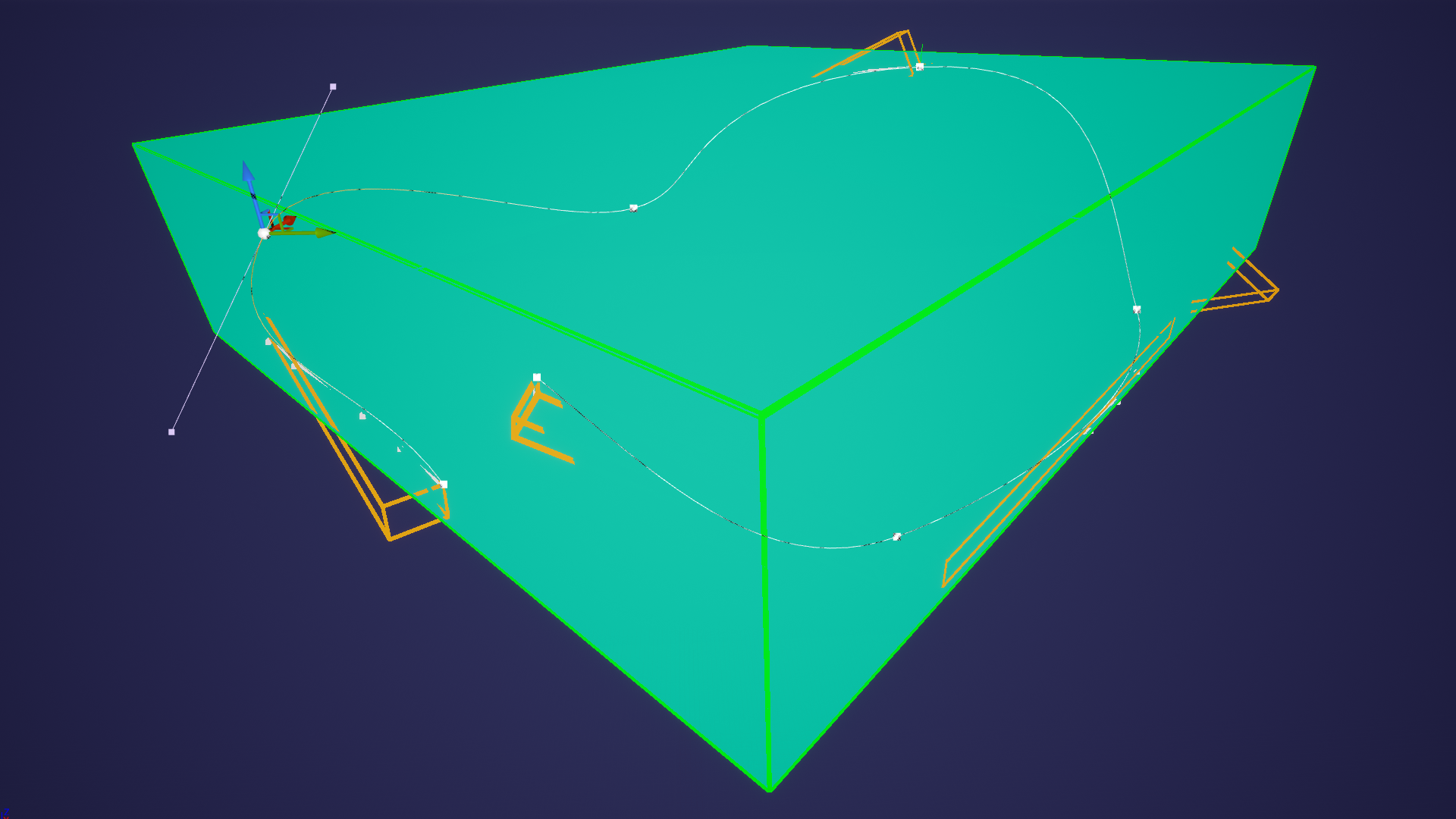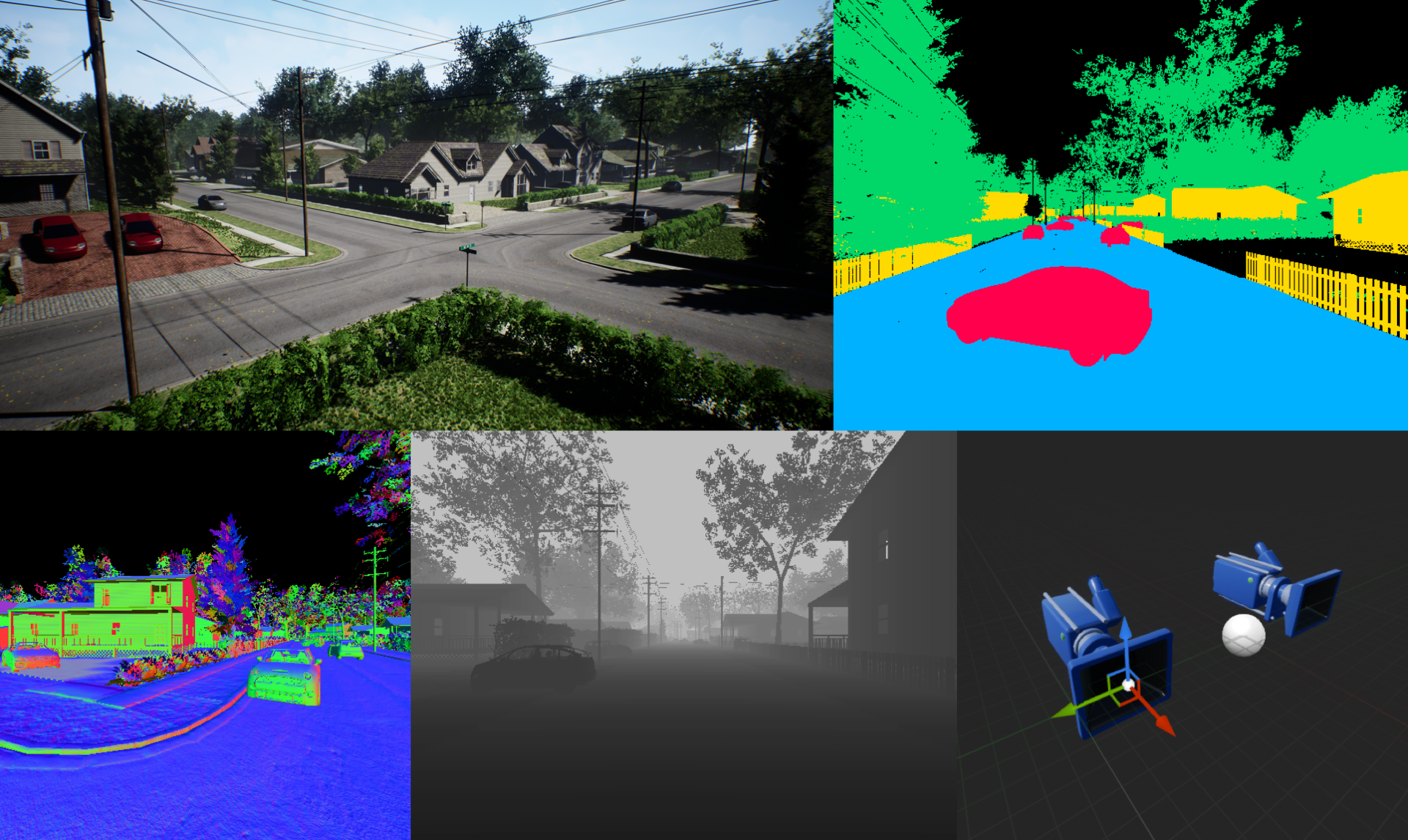Portfolio: Lorenz Junglas
Procedural City Generation [WIP]
I have been spending a lot of time developing runtime procedural
generation tools recently. They are all part of a larger system.
The larger system is not yet ready to be shown. But here
are some images & videos of the individual modules.
Model synthesis
Constraint-based model generation using Model Synthesis. Model
Synthesis takes a tile set with adjacency constraints as input and
assembles the tiles in a valid configuration. This is heavily
inspired by the fantastic work of Paul Merell and Maxim Gumin.
Splines
Splines are essential in the system. They are used for geometry
generation and for partitioning the world into regions. I wrote a
custom spline library that supports advanced features like offsetting,
splitting, and bounding box calculation.

Bounding box calculation for individual spline segments and whole
spline.
Spline offsetting: Offseting/Insetting is only trivial to a certain
degree; as soon as the spline self intersects, we have to
interpolate the offset curve.
Runtime Geometry generation along splines.
Curved subdivision
Curve based subdivision: The goal is to generate primarily
rectangular yet interesting-looking subplots from any polygons, even
heavily "indented" polygons like the ones in the clip.
Bezier curves are used for geometry a half edge structure for topology.
Bezier curves are used for geometry a half edge structure for topology.
MeshVPR - Citywide Visual Place Recognition Using 3D Meshes
Geo-localization with the help of public accesible 3D city models is
the goal of a research project which i worked on for over 2 years. If
you never heard of geo-localization think of geo guesser but the
guesses are performed by an algorithm.
The localization is accomplished through an image-retrieval-based approach using a database pre-sampled from the 3D model. Unreal Engine & Cesium are used to render the 3D model and generate the database. Machine learning is used for the actual image-retrieval/geo-localization.
A live demo of this tool was showcased at ICCV 2023 in Paris, CVPR 2024 in Seattle and ECCV 2024 in Milan.
The localization is accomplished through an image-retrieval-based approach using a database pre-sampled from the 3D model. Unreal Engine & Cesium are used to render the 3D model and generate the database. Machine learning is used for the actual image-retrieval/geo-localization.
A live demo of this tool was showcased at ICCV 2023 in Paris, CVPR 2024 in Seattle and ECCV 2024 in Milan.
UnrealGT
UnrealGT is a powerful tool that utilizes the Unreal Engine to
generate test imagery and data from virtual worlds. The plugin
provides a variety of data generators out of the box that can be
used without coding. The built-in generators enable the synthesis of
various types of images, including color images, depth images,
semantic segmentations, normal maps, and depth maps. Additionally,
the tool allows for easy expansion through custom generators.


 Guess Who
Guess Who

In terms of raw numbers Guess Who was probably my most successful
project. With over 1.5 Million downloads and hundreds of millions of
views on YouTube.
Guess Who is a hide and seek like game mode for the game Garry's mod. In Guess Who, two teams compete against each other, one trying to hide between NPCs and the other one trying to figure out which character is an NPC and which is a real player. The game mode is customizable and offers interesting gameplay mechanics in the form of hider abilities.
Guess Who is a hide and seek like game mode for the game Garry's mod. In Guess Who, two teams compete against each other, one trying to hide between NPCs and the other one trying to figure out which character is an NPC and which is a real player. The game mode is customizable and offers interesting gameplay mechanics in the form of hider abilities.
Voxelscape
A small project that was created over three months, a colleague and I
created Voxelscape, a voxel-based RTS game using C++ and OpenGL.
Although we primarily focused on technical and graphics/rendering
components, we also incorporated gameplay features such as a resource
system and building system.
The feature showcase highlights most of our gameplay and technical features, which include, building/block placement, terrain generation and distance field-based shadows.
The feature showcase highlights most of our gameplay and technical features, which include, building/block placement, terrain generation and distance field-based shadows.
 Frost Tribes
Frost Tribes
A clash of clans style game mode for DotA 2 for the Frostivus 2017
custom game contest. Complete with cross-lobby persistence. 3
different modes exist:
- Single Player mode, here the player farms resources and develops their base.
- PvP mode here Players can battle each other using the base created in single player.
- PvE coop mode here players team up to fight against the AI in a campaing.